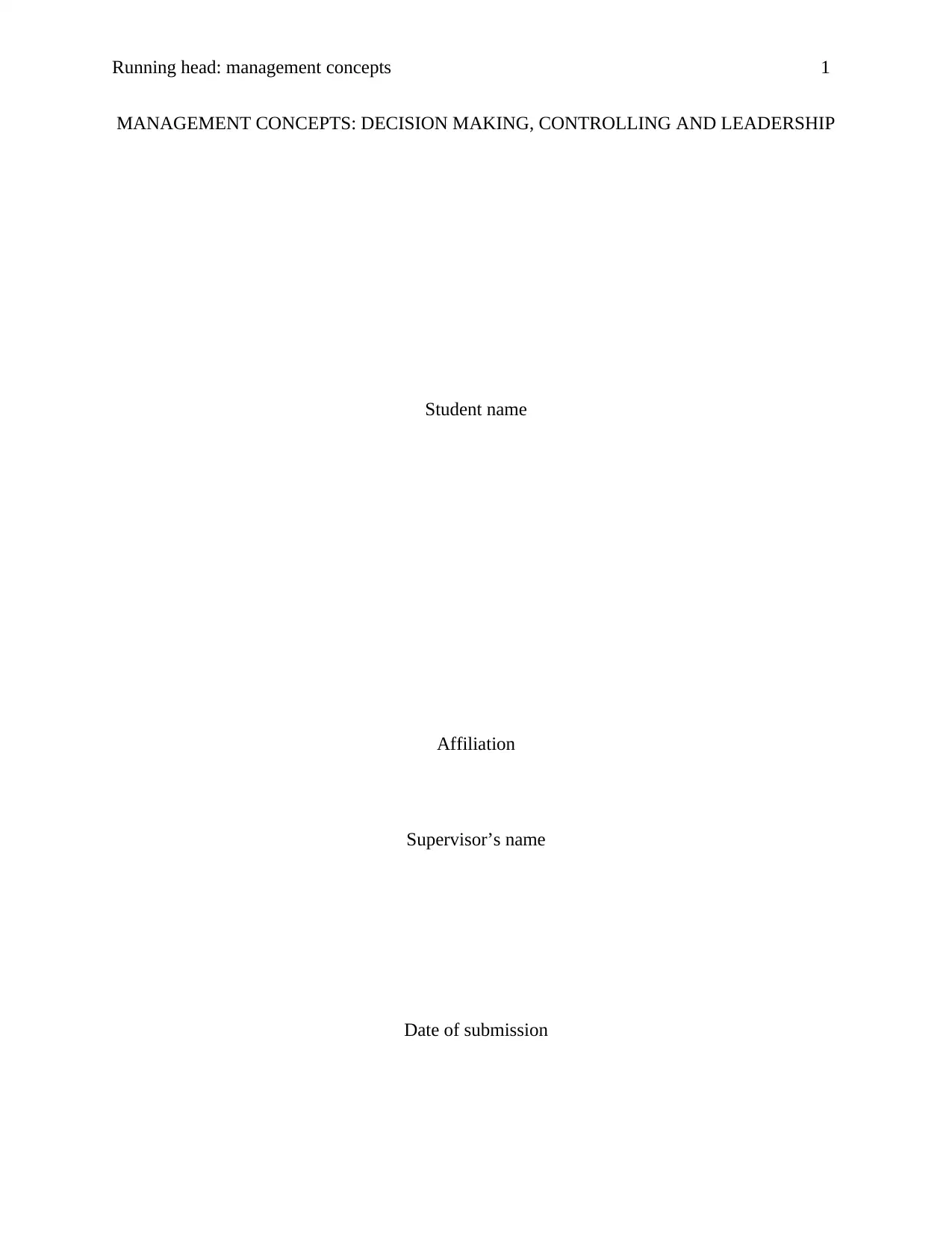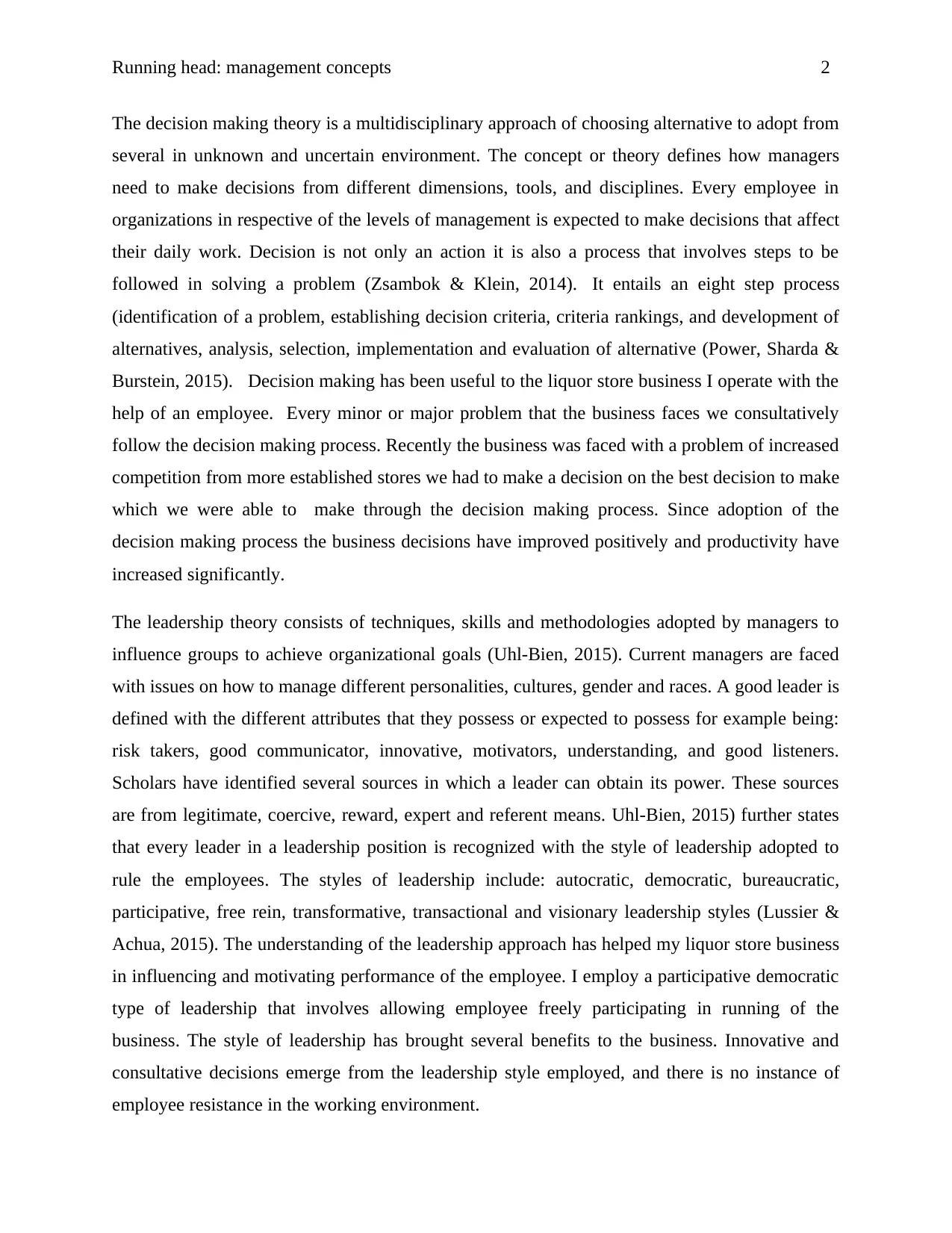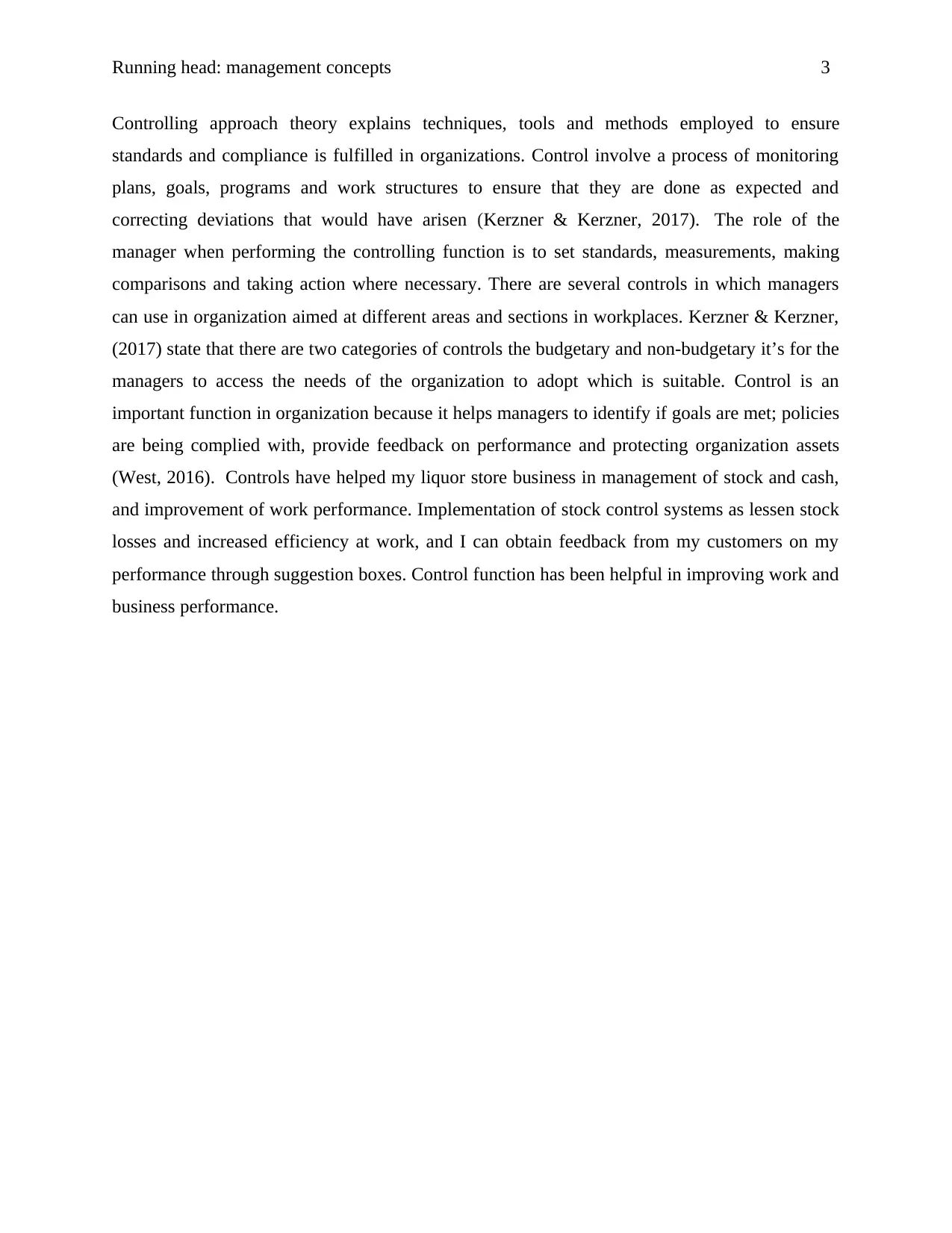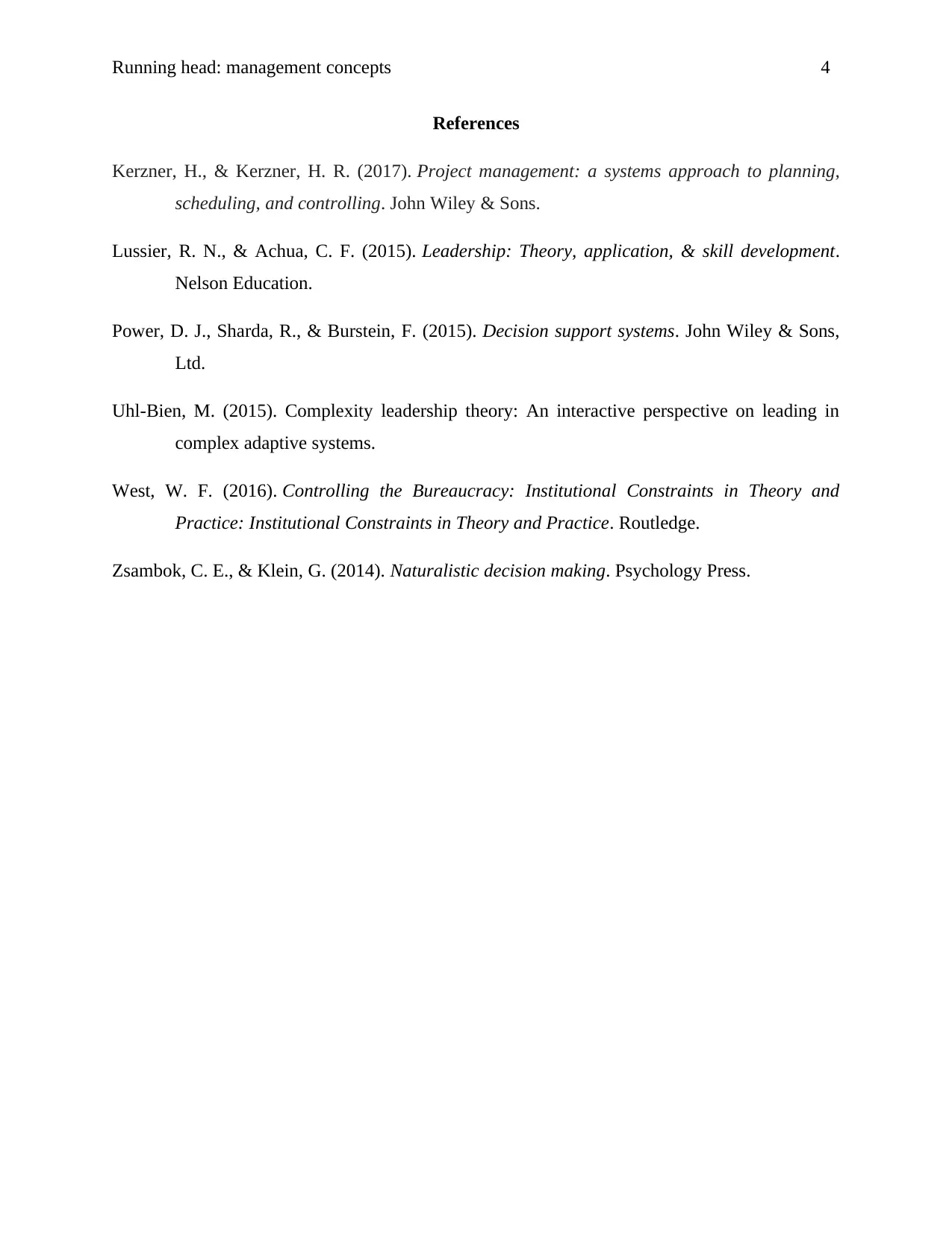Analysis of Decision Making, Controlling, and Leadership Concepts
VerifiedAdded on 2021/06/14
|4
|895
|22
Essay
AI Summary
This essay delves into the critical management concepts of decision-making, controlling, and leadership, examining their theoretical underpinnings and practical applications within a business context. It begins by outlining the decision-making process, highlighting its importance in navigating uncertain environments and improving organizational productivity, referencing the author's experience in the liquor store business. The essay then transitions to leadership theory, discussing various leadership styles and their impact on employee motivation and organizational performance, with a focus on the benefits of a participative democratic leadership approach. Finally, it explores the controlling function, emphasizing its role in ensuring standards, compliance, and the protection of organizational assets through budgetary and non-budgetary controls, detailing the implementation of stock control systems and feedback mechanisms in the author's business to enhance efficiency and performance.
1 out of 4










![[object Object]](/_next/static/media/star-bottom.7253800d.svg)